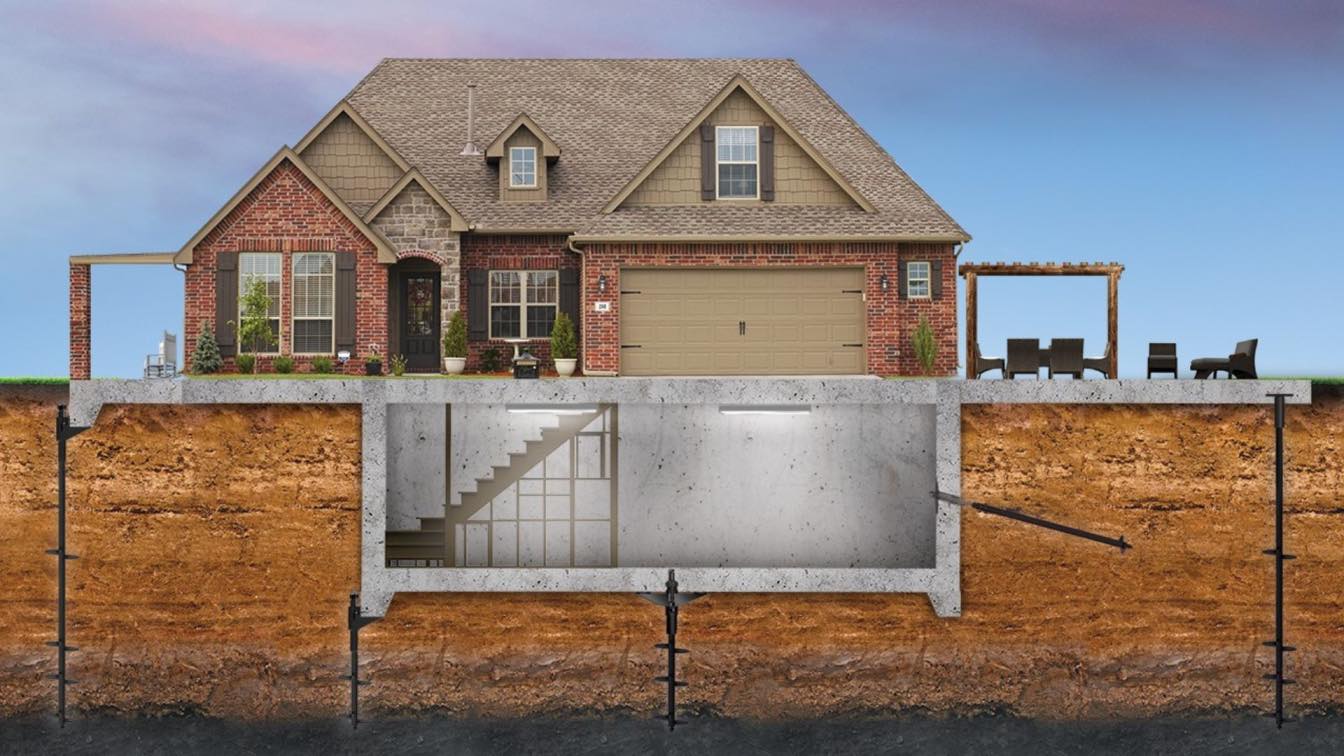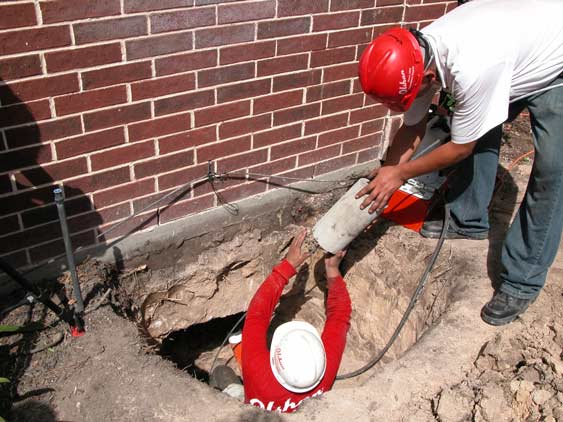Checking Out Different Approaches of Foundation Fixing for Different Dirt Types
Structure repair work is a critical element of maintaining architectural integrity, specifically when considering the varied challenges presented by different dirt types. The intricacy of soil habits under varying conditions requires a customized method to fix, guaranteeing optimum services such as helical piers for unpredictable soils or chemical grouts for natural layers. The question stays: just how do we determine the most efficient approach for each unique scenario? Comprehending the interaction between soil attributes and fixing techniques is vital, yet there is even more to uncover in the quest for lasting remedies. What factors really determine the option of approach?
Comprehending Dirt Types
Soil types play a vital function in the stability and longevity of building structures, making it crucial for home owners and building and construction specialists to recognize their features and habits. The interaction between soil and structure can figure out the structural integrity of a building. There are several dirt kinds, each with distinctive physical properties that influence just how foundations are developed and maintained.
Granular soils, such as sand and crushed rock, provide excellent drainage and are usually thought about steady. In contrast, natural soils like silts and clays exhibit different actions.
Rocky dirts, understood for their strength and stability, deal excellent assistance for structures however may require specialized equipment for excavation. Conversely, fertile dirts, which are a well balanced mix of clay, sand, and silt, often give positive conditions for foundation assistance as a result of their moderate drainage properties.

Comprehending these dirt kinds is critical for picking ideal structure repair techniques, ensuring the longevity and security of frameworks in time.
Obstacles With Large Clay
Amongst the numerous dirt types, extensive clay presents unique obstacles for structure security as a result of its propensity to undergo significant quantity modifications with dampness variant. This sort of dirt swells when wet and agreements when dry, which can put in considerable stress on structures. These fluctuations can lead to foundation splitting, heaving, and negotiation issues, posturing significant threats to the structural stability of structures.
The challenges with expansive clay are exacerbated by its plasticity index, which gauges the dirt's ability to change shape and volume. A high plasticity index shows higher potential for activity, boosting the possibility of damage to foundations. This is specifically troublesome in regions experiencing constant or extreme weather changes, where cycles of damp and completely dry conditions are usual.
In addition, the depth of extensive clay layers can vary, making complex the evaluation and preparation of ideal foundation repair work approaches. These intricacies require a comprehensive geotechnical analysis to guarantee reliable structure repair techniques are carried out, highlighting the importance of addressing large clay challenges with knowledge and care.
Solutions for Sandy Soils
Sandy soils, characterized by their large bit size and low communication, existing unique difficulties for foundation security due to their tendency for moving and disintegration. By securing the foundation to deeper, more steady dirt layers, these systems can provide the needed assistance to combat the shifting nature of sandy dirts.
An additional recommended method is the application of soil stabilization methods. Chemical grouting, as an example, entails infusing a supporting representative right into the soil, which enhances communication and lowers leaks in the structure. This procedure helps to strengthen the sandy substratum, therefore lessening the risk of disintegration and motion.
Additionally, mounting correct drain systems is vital in sandy dirt conditions. Ensuring ample drain can prevent water buildup around the structure, which typically intensifies disintegration and dirt displacement. Strategies such as French drains pipes or surface grading can be employed to route water away from the my review here structure perimeter.
Resolving Working Out in Loamy Soils
Loamy dirts, understood for their well balanced mix of clay, sand, and silt, use an abundant base for many frameworks yet can sometimes bring about foundation settling as a result of their unique structure. This well balanced appearance gives superb water drainage and nutrient retention, making it excellent for farming and landscaping. This very same quality can become troublesome for foundations, as shifts in moisture material can trigger the dirt to broaden or agreement, leading to clearing up.
Precise soil testing is crucial to establish the certain structure and moisture material of the loam. Once information is collected, applying correct drainage options is necessary to preserve regular moisture degrees, therefore minimizing the danger of dirt contraction or expansion.

Cutting-edge Repair Methods
In the world of foundation fixing, ingenious strategies are constantly being developed to deal with the complex tests posed by different soil problems. As soil kinds differ dramatically in their architectural buildings, typical approaches may not constantly are enough. The introduction of new modern technologies in foundation repair work supplies extra tailored services, ensuring security and durability.
One noteworthy technology is using helical piers, which are particularly reliable in unsteady or large dirts (foundation repair Oklahoma). These piers are screwed into the ground till they get to a stable layer of browse around this site soil, providing strong support for the foundation above. This method minimizes interruption and is versatile to various dirt kinds, making it a functional remedy
One more cutting-edge strategy is the application of polyurethane foam shot. This technique involves injecting high-density polyurethane foam under the foundation to fill up spaces and support the structure. It is a much less invasive Home Page option to traditional support, supplying fast installation with very little disruption to the surrounding location.
Furthermore, soil stabilization methods, such as using chemical cements, have gotten grip. These compounds improve dirt stamina and decrease permeability, preventing future shifting. Collectively, these ingenious repair work techniques offer reliable options for the varied obstacles presented by differing dirt conditions.
Final Thought

Foundation fixing is a critical element of keeping architectural integrity, especially when considering the varied challenges posed by different soil kinds (foundation repair oklahoma city). The intricacy of dirt actions under varying problems demands a customized strategy to fix, guaranteeing ideal options such as helical piers for unstable soils or chemical cements for cohesive layers. By anchoring the foundation to much deeper, much more stable dirt layers, these systems can supply the essential assistance to combat the moving nature of sandy dirts
Structure repair needs mindful consideration of soil kinds to make certain stability and long life. Chemical grouts boost dirt toughness and minimize permeability in cohesive dirts.